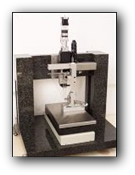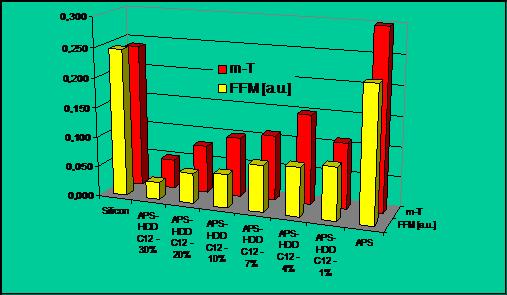- University of Lodz
- Faculty of Chemistry
- Department of Materials Technology and Chemistry
- Experimental techniques and apparatus
- Microtribometer
Microtribometer

The T-23 (ITEE Radom) tribotester constructed according to our design is a bridge between measurements on the atomic scale and on the macroscale, observed in the friction nodes of machines and devices.
The T-23 microtribometer was awarded a gold medal at the International Warsaw Invention Show "IWIS 2007" in Warsaw.
Very interesting results have been obtained using it, including those illustrating changes in the friction properties of coatings in micro-areas (sizes less than 100 mm), impossible to record with the friction testers previously owned by our team.
Microtribometer parameters:
-
Load range: 1-1000 mN
-
Reciprocating movement (can be easily expanded to a pin on disc system)
-
Travel speed: 0,1 - 100 mm/minute
-
It is possible to create maps of the friction coefficient in an area of up to 50 x 50 mm with a resolution of up to 50 mm for any selected load in the range of 1-1000 mN
-
Sampling frequency: physical sampling frequency of the measurement card 1.25 MHz, response frequency of the strain gauge beam to load changes approx. 2-3 kHz, practical frequency of recording the actual friction coefficient up to approx. 100 Hz (each measurement point is averaged from several dozen partial measurements). In practice, this means measuring the friction coefficient approximately every 10 mm during movement in the friction node
-
The friction coefficient is calculated in real time by dividing the friction force measured with the first strain gauge (tangential to the direction of movement) by the load force measured with the second strain gauge (perpendicular to the direction of movement)
-
The load is applied from the software level by setting the weight using a stepper motor in such a position that the strain gauge measuring the pressure force indicates the set value
-
Motion control and data acquisition are performed using a PC using the fully open and user-modifiable LabVIEW platform
-
The apparatus is built in a very rigid stone casing, which dampens vibrations that may disturb the measurement, and is placed on a table that minimizes external vibrations
-
High sampling frequency and LabVIEW software allow for recording acoustic vibrations generated in the friction process and imaging them in real time, as well as recording and playing them later. This makes it possible to thoroughly study the mechanical processes taking place in the friction node
-
The device has a housing that allows to control the atmosphere surrounding the friction node, including operation in an inert gas environment, e.g. nitrogen
-
It is possible to measure the friction coefficient with changing load within the range set by the experimenter. This allows for testing the resistance of coatings to wear (scratching)
The experimental conditions for measuring the friction coefficient in the described microtribometer were selected to be as close as possible to those prevailing during friction measurements using an atomic force microscope (FFM). The aim of such a procedure was to create a measurement device that would be a bridge between measurements on the subatomic scale and the macroscale observed in the friction nodes of machines and devices. During comparative measurements, it was possible to obtain very good agreement between the trends in the results of friction coefficient measurements on the nanoscale (FFM) and the micro scale (microtribometer). Obviously, the results of measurement of friction coefficients on the nanoscale are presented in arbitrary units [a.u.], as seen in the selected example.

The chart comes from the presentation G. Celichowski "Tribological Properties of Aminosilica Sol-Gel Thin Films Functionalised by Dialkyldithiophosphoric Acids" shown at the IV International Conference on Tribochemistry Kraków, Poland, October 3 - 5, 2005
A very important design feature of the microtribometer is the ability to use it as a high-class computer-controlled dip-coater (a device for applying thin layers from solutions by immersion). To achieve this, simply use an additional handle to hold the substrate on which the thin layer is applied.
To illustrate the measurement possibilities, we present a piece of the results published as a poster at the 3rd Word Tribology Congress Washington, D.C. 2005. A photo of a flaw caused by friction with the measured friction coefficient superimposed on it and a photo of the microtribometer are shown below.

The value of the friction coefficient correlated with the wear processes and wear trace formation. As you can see, one can easily observe the microtribometer's response to even the smallest wear processes occurring during measurement.

Construction details of the apparatus with particular emphasis on the strain gauge system (right photo).
To sum up - the constructed microtribometer meets all the expectations placed on it and is a fully functional system for measuring the friction coefficient in the mN load range. We would like to emphasize that the described structure is a unique solution in our country and, thanks to our cooperation with many research units, it has become available to the Polish community of scientists involved in research on friction processes.
More info: ITEE Radom
